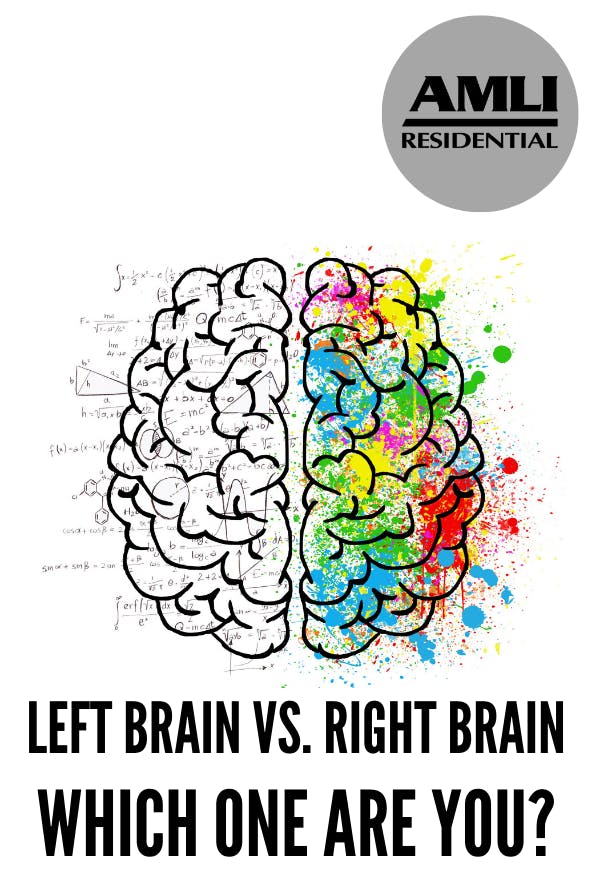The terms “left brain" and "right brain” refer to the two hemispheres of the brain. It is widely believed that the left and right hemispheres control separate aspects of cognitive function and dictate certain personality traits. Recent studies, however, have shown that the left and right brain separation is misunderstood.
Left brain vs. right brain: myth or fact?
How does the brain work?
The brain is divided into two symmetrical hemispheres. Each one is in charge of the opposite side of the body. So the left hemisphere controls the right side, and the right hemisphere controls the left side. The two hemispheres, however, take in sensory input from each other.
The brain is also segmented into lobes, and each lobe controls a different area of the body.
According to WebMD, the frontal lobe (front of the brain) controls your body movement, personality, problem-solving, concentration, planning, emotional reactions, sense of smell, the meaning of words and general speech.
Your parietal lobe (upper middle of the brain) controls your sense of touch and pressure, sense of taste and bodily awareness.
The temporal lobe (middle of the brain) governs your sense of hearing, ability to recognize others, emotions,and long-term memory.
The occipital lobe (backside of the brain) controls the important sense of sight.
The cerebellum (lower backside of the brain) governs fine motor control, balance and coordination.
The limbic lobe (middle of the brain) controls emotions.
The myth
So while it is common to believe that left-brained people are mostly analytical and methodical in their thinking and right-brained people are more creative or artistic, it seems that this myth is really based on people categorizing themselves as such based on their skills and interests.
Personally, I have always believed that I was a right-brained person. I love to create things; I prefer to work with words rather than numbers; and consider myself to be an artist. Based on the current research, however, that would mean that these are my personal interests and preferences and not the result of one side of my brain being dominant over the other. But people tend to like the myth of being left-brained or right-brained. It gives us a defined personality type. It gives us a space where we “fit in.” And, it fuels our need to feel like we have an untapped resource of creativity and/or logic.
It's complicated
Our brain functions, however, are much more complex than our simple categorization of being a left-brain or right-brain person. It turns out that both halves of the brain are used regularly with neither side appearing to be dominant over the other. And while it is true that some functions are performed more on one side of the brain, such as language on the left and emotions on the right, both sides must still work together to function properly. Additionally, the lobes of the brain have specific jobs to do as well.
The brain is very complex and processes millions of pieces of stimuli a day. It does this by using neural connections through a neural network that encompasses all areas of the brain. Research has found no evidence to support stronger networks on one side of the brain or the other.
Brain tests
Brain tests are popular and fun but typically reveal more about personal preferences than they do about our neural anatomy since research has proven that both sides of the brain work together to perform all different kinds of tasks.
Train your brain
Some exciting news is that even though there truly isn't a left-brain or right-brain classification, you can actually train your brain to learn new skills that you might want to pursue. You can become more creative, more analytical, and more linguistic. Our brains can learn and grow as we age but we must train them on a regular basis. Brain exercises that help keep us mentally sharp are doing puzzles, playing cards, dancing, learning new skills and listening to music. Whatever you choose, however, be sure that it challenges you. You must challenge your brain in order for it to grow.
So while it may not be accurate to label ourselves as left-brained or right-brained, it is certainly fine to label ourselves as creative, analytical, or intuitive. Being able to identify our preferences and skills opens the door for us to pursue the things we love. Knowing this information about ourselves puts us one step closer to achieving our goals and dreams no matter what part of the brain our ideas may come from.
Pin it!

Feature photo courtesy Pixabay/OkBoks


 View All Posts by Barb Bauer
View All Posts by Barb Bauer